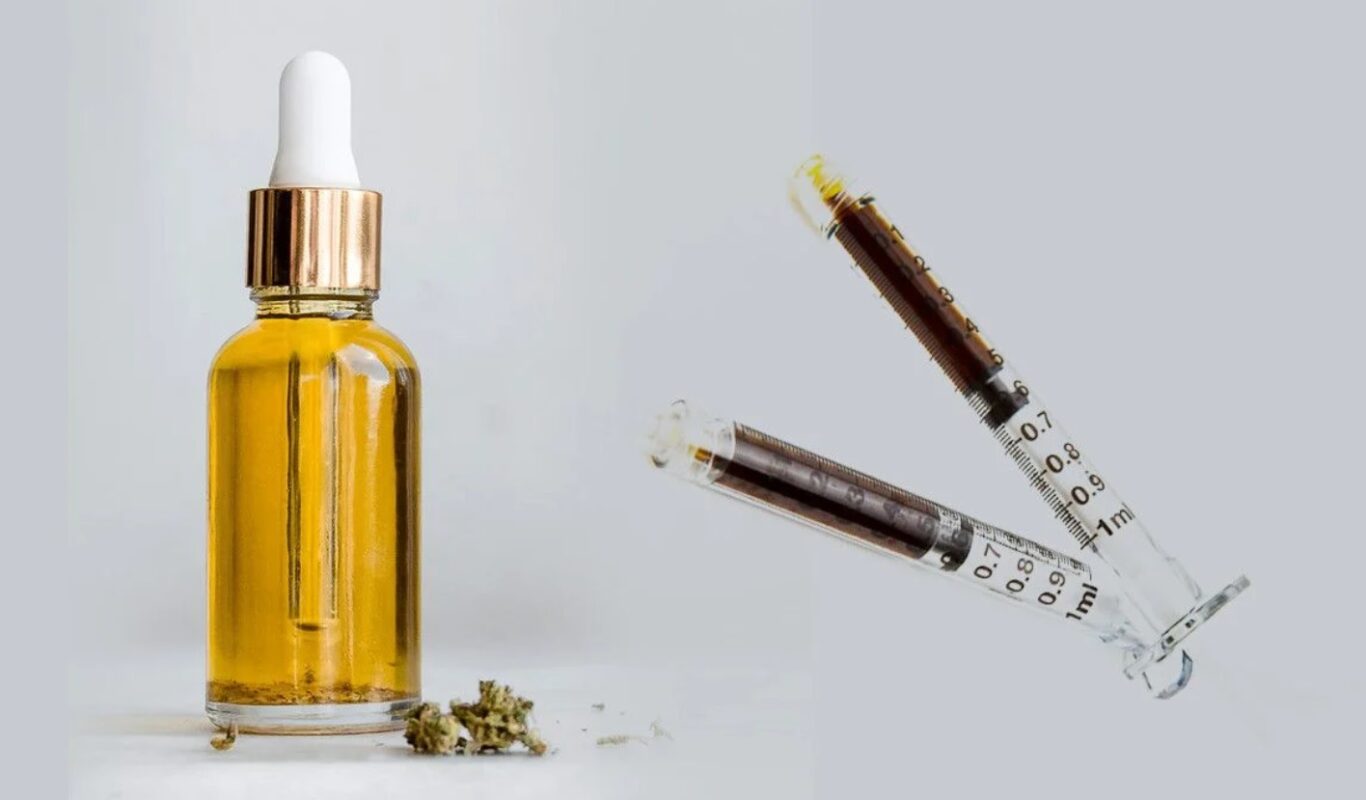Uncategorized
What is Rick Simpson Oil: A Comprehensive Overview of RSO
What is Rick Simpson Oil? Rick Simpson Oil, abbreviated as RSO, stands as a remarkable innovation within the realm of cannabis. Originating from the hands of Rick Simpson, a Canadian engineer and cannabis advocate, RSO emerged as a solution to his own health struggles following a workplace accident. This dark, viscous extract, which bridges the realms of concentrate, edible, and topical, is hailed for its versatility and therapeutic potential.
RSO’s genesis story intertwines with Simpson’s journey towards cannabis activism, spurred by his personal healing experience with the oil. Despite its unpalatable taste due to the inclusion of the whole cannabis plant, RSO embodies a comprehensive profile of cannabinoids, terpenes, and other plant compounds. While the extraction process mirrors that of making a tincture, its efficacy in addressing various health conditions such as cancer, multiple sclerosis, and asthma is widely recognized.
Although Simpson no longer produces RSO himself, its significance endures in the treatment regimens of patients across North America.
Rick Simpson’s Narrative
What is rso? Rick Simpson’s narrative isn’t one of seeking cannabis fame. In 1997, as a Canadian engineer, he found himself working on asbestos-covered pipes in a hospital boiler room. The hazardous environment led to a fall that resulted in tinnitus and dizzy spells, defying conventional treatment. Against medical advice, Simpson turned to medical marijuana, finding relief from his symptoms.
In 2003, a diagnosis of basal cell carcinoma propelled Simpson into the realm of cannabis advocacy. Despite Canada’s legalization of medical cannabis, finding supportive doctors was challenging. Encouraged by a 1975 study demonstrating cannabis’s tumor-inhibiting properties in mice, Simpson developed RSO, claiming its application cured his cancer, though this remains unverified.
Distributing RSO freely to thousands of patients led to legal troubles in 2009 when Canadian authorities raided his property, seizing numerous cannabis plants. Seeking refuge from legal persecution, Simpson now resides in Croatia, maintaining an online platform for RSO recipes, dosing guidelines, and literature. Despite a stroke in 2018, Simpson’s dedication to RSO and medical cannabis persists, although he has withdrawn from public visibility.

Benefits of RSO
Rick Simpson Oil (RSO) has garnered attention for its potential benefits, although scientific backing is limited due to cannabis being classified as Schedule I. However, with increasing legalization, more data is emerging.
Promising reports include a 2013 study demonstrating RSO’s effectiveness in reducing leukemic blast cell count in a terminal patient without toxic side effects. Anecdotal evidence suggests RSO may assist in managing conditions like multiple sclerosis, epilepsy, cancer, insomnia, chronic pain, and asthma.
What is rso weed? RSO, being a highly potent THC product, may offer therapeutic effects such as pain relief, appetite stimulation, sleep aid, and nausea reduction. Yet, without extensive studies, these benefits can’t be guaranteed.
Despite many cancer patients using cannabis alongside conventional treatments, primary care teams often lack guidance on integrating it effectively. Thus, further research is essential to optimize RSO’s role in treatment.
Rick Simpson, inspired by his own battle with cancer, developed RSO aiming to replicate a 1975 study showing cannabis’s potential to kill cancer cells. While Simpson claims to have cured his skin cancer with topical RSO, its efficacy for internal cancers remains unverified. Nonetheless, countless patients have reported symptom relief and improved quality of life with RSO use.
For cancer patients considering RSO, consulting with a primary care doctor is crucial.
Chronic pain, including back pain, is a common reason for RSO use. RSO weed recipes often feature high-THC, indica-dominant cannabis, with THC binding to CB1 receptors in the endocannabinoid system, potentially reducing pain sensation. Gradual dosage increase is recommended to manage intoxication.
Is RSO Harmful?
Despite its potent THC content, consuming RSO won’t lead to an overdose, death, or long-term side effects. Risks are akin to those of ingesting large doses of any cannabis product, such as edibles or concentrates, namely experiencing intense intoxication and needing to wait for it to subside.
Dispensary-bought RSO undergoes rigorous lab testing, ensuring it’s free from solvents, pesticides, mold, and fungi, guaranteeing a safe product. However, homemade RSO preparation involves hazardous steps like evaporating flammable ethanol solvents. Other solvents used may be explosive or emit toxic fumes, and residual alcohol may remain in the rso oil.
To ensure safety, it’s advisable to procure RSO from licensed dispensaries if unsure about homemade quality.
Where to Find Rick Simpson Oil?
RSO, containing THC, is exclusively available in licensed dispensaries within states permitting adult-use cannabis or medical marijuana. However, not all dispensaries stock RSO due to its lesser popularity and higher cost compared to other cannabis forms.
RSO Cost Considerations
RSO is relatively pricey compared to products like gummies or flower. Costs vary depending on state and local tax regulations, typically ranging from $35 to $70 per gram. Following the recommended RSO regimen, which requires 60 grams, can total at least $2,100.
How to Utilize RSO: Common Methods and Considerations
The primary ways to utilize RSO are orally and topically. Rick Simpson famously employed it topically for his skin cancer, though his physician’s endorsement of this cure remains unconfirmed.
Timeframe for Effects
RSO necessitates weeks to adjust to without causing intoxication. While some effects may manifest within days, significant relief typically occurs once the daily dosage reaches one gram, a process that may take up to five weeks.
For Skin Conditions
When using topically, apply RSO to the affected area and cover with a bandage for optimal absorption. Repeat every other day.
For Internal Issues
Ingesting RSO is popular for addressing internal ailments like pain and immune disorders. This method requires gradual adjustment to higher doses over weeks. Consulting a knowledgeable medical professional is advised.
Dosage Guide
This guide follows Rick Simpson’s recommendation of consuming 60 grams of RSO over 90 days. However, it lacks medical professional review.
Potential Side Effects
Gradually increasing RSO dosage helps mitigate potential side effects like sedation or dizziness. Combining RSO with CBD-rich products can counteract THC’s intoxicating effects.
Smoking or Dabbing RSO
While RSO can be smoked or dabbed, it’s best mixed with flower or used in joints and blunts. Purchasing lab-tested RSO is recommended to avoid harmful additives.
Cooking with RSO
RSO can be incorporated into cooked meals, but temperatures exceeding 300ºF may reduce its efficacy. It’s advisable to add RSO to already cooked dishes or uncooked elements like sauces or beverages for optimal results.
Simple RSO Dosage Chart

RSO Treatment Plan
According to Simpson’s guidance, while orally ingesting the oil is preferred, patients also have the option of using it in suppository form, following the same dosage recommendations.
Weeks 1-3: Begin with three small doses daily
Commence with a small RSO dose every eight hours (morning, midday, and night), each approximately half the size of a grain of rice; the initial dose amounts to around ¼ drop of RSO from an oil syringe.
Weeks 4-5: Gradually increase dosage every four days
As advised by Simpson, most patients require four to five weeks to reach the full dosage of one gram of RSO per day, starting from half a grain of rice. Dosages should still be taken every eight hours.
Weeks 6-12: Maintain one gram daily
Continue with a daily intake of one gram of RSO until consuming a total of 60 grams. This translates to approximately 8-9 rice-sized drops every eight hours.
Ongoing Maintenance
After adapting to a daily one-gram RSO regimen and completing the recommended 60 grams, patients need not persist with such high doses, which can be costly. Simpson’s website suggests consuming one to two grams monthly to sustain a steady flow of cannabinoids.

Crafting RSO
Here’s a simplified guide for making RSO, following Simpson’s method. Remember, work in a well-ventilated area and avoid open flames.
Ingredients:
- 1 pound (~450 grams) of dried cannabis (preferably indica strains)
- 8-9 liters of solvent (Simpson recommends 99% isopropyl alcohol)
Equipment:
- Two five-gallon buckets
- Electric rice cooker (avoid slow cookers)
- Large wooden spoon or stirring utensil
- Funnel
- Plastic syringes
- Coffee filters or cheesecloth
- Large fan (for ventilation)
- Optional: Stainless steel measuring cup, coffee warmer
Instructions:
- Preparation: Place cannabis in one bucket and cover with solvent. Stir thoroughly while avoiding flames.
- Mixing: Stir the mixture for about three minutes to dissolve THC.
- Straining: Filter the mixture through cheesecloth into the second bucket.
- Repeat: Return the plant material to the first bucket, add more solvent, and stir again.
- Second Strain: Filter the mixture into the second bucket again, removing the plant material.
- Evaporation: Pour the solvent into the rice cooker and heat it to 210-230°F (100-110°C) to evaporate the solvent.
- Gradual Evaporation: Gradually add the mixture to the rice cooker.
- Final Steps: Once the solvent has evaporated, fill syringes with the thick oil. If it’s too thick, warm the syringe under hot water for easier dispensing.


